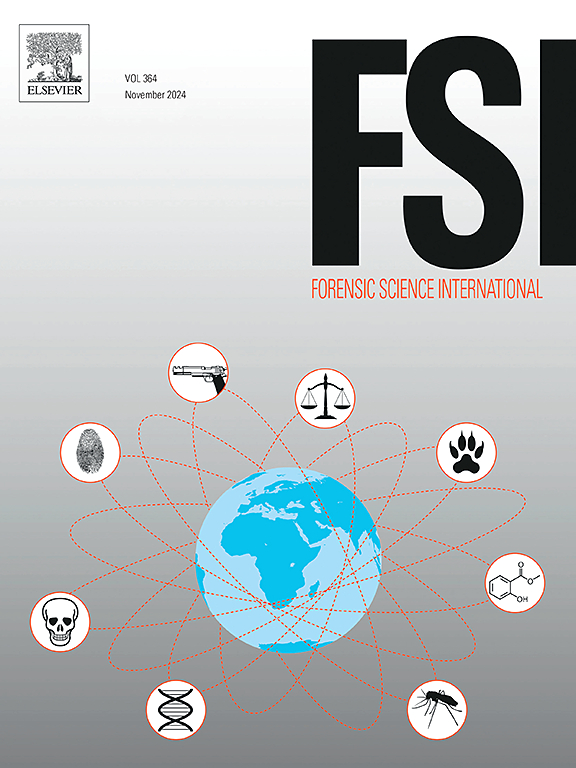技术说明:YEET家族的一款静音混合3d打印自装填手枪。
IF 2.2
3区 医学
Q1 MEDICINE, LEGAL
引用次数: 0
摘要
自从第一支3d打印枪支“解放者”发布以来,3d打印枪支在犯罪活动中的出现有所增加,这凸显了对这些武器进行法医研究的必要性。本研究介绍了国家犯罪学和犯罪学研究所(NICC)收到的3d打印枪支的技术检查,重点关注其设计,弹道性能及其微观比较分析的潜力。该枪类似于3d打印手枪Yeet22,主要由聚合物部件构成,除了射击销、枪管和各种弹簧和螺钉。值得注意的是,这种枪支包括一个先前描述过的消声器。速度测试显示,子弹速度低于标准的。22 LR枪械,但在最大速度下仍足以致命。对发射的弹壳进行的法医检查显示出可区分的枪膛痕迹,便于进行比较分析。对参考子弹上的条纹痕迹进行比较也是可能的,尽管只有在子弹以彼此接近的顺序发射时才有可能。然而,这种3d打印枪支的可靠性被发现明显低于传统枪支。这些观察结果强调了对3d打印枪支进行法医调查的挑战和重要性,因为它们在犯罪背景下变得越来越普遍。本文章由计算机程序翻译,如有差异,请以英文原文为准。
Technical note: A silenced hybrid 3D-printed self-loading pistol of the YEET family
Since the release of the first 3D-printed firearm, "The Liberator," the occurrence of 3D-printed firearms in criminal activities has increased, highlighting the need for forensic research on these weapons. This study presents a technical examination of a 3D-printed firearm received by the National Institute of Criminalistics and Criminology (NICC), focusing on its design, ballistic performance, and its potential for microscopic comparative analysis. The firearm, resembling a 3D-printed pistol Yeet22, is primarily constructed from polymer parts, with the exception of the firing pin, barrel, and various springs and screws. Notably, this firearm includes a previously undescribed sound suppressor. Velocity tests revealed that the bullet velocity was lower than that of a standard .22 LR firearm, yet still high enough to be lethal at its maximum speed. Forensic examination of the fired cartridge cases showed distinguishable chamber marks, facilitating comparative analysis. Comparisons of the striation marks on the reference bullets was also possible although only for bullets fired in close sequence to each other. However, the reliability of this 3D-printed firearm was found to be significantly lower than conventional firearms. These observations underline the challenges and importance of forensic investigations of 3D-printed firearms, as they become more prevalent in criminal contexts.
求助全文
通过发布文献求助,成功后即可免费获取论文全文。
去求助
来源期刊

Forensic science international
医学-医学:法
CiteScore
5.00
自引率
9.10%
发文量
285
审稿时长
49 days
期刊介绍:
Forensic Science International is the flagship journal in the prestigious Forensic Science International family, publishing the most innovative, cutting-edge, and influential contributions across the forensic sciences. Fields include: forensic pathology and histochemistry, chemistry, biochemistry and toxicology, biology, serology, odontology, psychiatry, anthropology, digital forensics, the physical sciences, firearms, and document examination, as well as investigations of value to public health in its broadest sense, and the important marginal area where science and medicine interact with the law.
The journal publishes:
Case Reports
Commentaries
Letters to the Editor
Original Research Papers (Regular Papers)
Rapid Communications
Review Articles
Technical Notes.
 求助内容:
求助内容: 应助结果提醒方式:
应助结果提醒方式:


